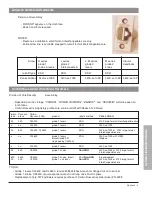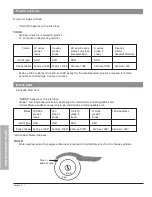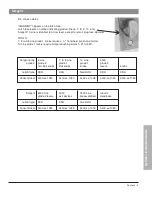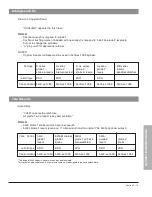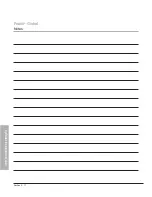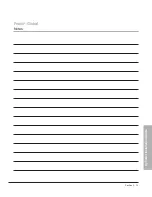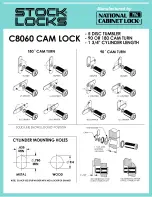
Section 4 - 8
K
e
y
C
o
n
tr
o
l
&
R
e
c
o
rd
K
e
e
p
in
g
The standards given below are used by the factory in designing and generating bitting lists. They apply to
the top master key (TMK) in a system as well as the control key (CTR).
Design Standards
1. TMK's should have at least one of the shallowest possible bittings in one progressed position, and one of
the deepest possible bittings in another position, whether it is progressed or not.
The purpose is to keep lower level keys from being cut down to the TMK or CTR bitting. The deepest
possible cut statistically reduces key manipulation (key picking) as does a moderately deep constant.
2. Moderate cut-to-cut variations should be employed. Extremes in adjacent cut depths cause premature
wear in the cylinder and on the key. Bittings of this type should be assigned last.
3. Uniformly shallow or deep keys should not be used. For example, 988789, is easy to pick, and any key in
the system can be cut down to it. Uniformly shallow keys, like 120112, also make the locks easy to pick.
4. Declining step keys should be avoided. 976642 is an example of a declining step key. Such keys, when
worn, tend to pull out of a turned plug and make the cylinder less pick-resistant.
5. Deep cuts next to the bow should be avoided as they can weaken a key. Kaba recommends that this
position be progressed last in any key system to make all keys as strong as possible.
Control Keys (CTR)
The control key (CTR) should have the same characteristics as a top master key. The control key should
normally differ from the top master key in all positions. The control key cuts are chosen from the progression
columns of the KBA. The control is actually a change key. Note in the sample system that the key bitting
array has been manipulated so that the control key is the last key in the system.
When you cross the control key combination off the progression list, you can be certain that no other key in
the system will ever be a control key.
CTR 9 6 0 4 7 8
TMK 5 2 8 6 1 4
7 4 2 8 3 6
3 0 4 0 5 2
1 8 6 2 9 0
9 6 0 4 7 8
SOP a b c d e f
All systems should have different TMK's and distinct CTR combinations.
TMK and control combinations
should be recorded in a register to prevent repetition of the combinations. Kaba recommends that parity pat-
terns be used to separate the master key systems from the KA and KD combinations for non-master keyed
projects.
CTR
9 6 0 4 7 8
deepest
shallowest
TMK
5 2 8 6 1 4
Designing Top Master Keys and Control Keys
Содержание 5140 Series
Страница 1: ...Technical Manual ...
Страница 5: ...Technical Manual Section 1 Introduction ...
Страница 11: ...Technical Manual Section 2 Product Information ...
Страница 38: ...Section 2 27 Product Information Peaks Global Notes ...
Страница 39: ...Technical Manual Section 3 Key Cutting and Pinning ...
Страница 62: ...Section 3 23 Key Cutting Pinning Peaks Global Notes ...
Страница 63: ...Technical Manual Section 4 Key Control Record Keeping ...
Страница 73: ...Technical Manual Section 5 Cylinder Installation Guide ...
Страница 84: ...Section 5 11 Cylinder Installation Guide Peaks Global Notes ...
Страница 85: ...Section 5 12 Cylinder Installation Guide Peaks Global Notes ...





















